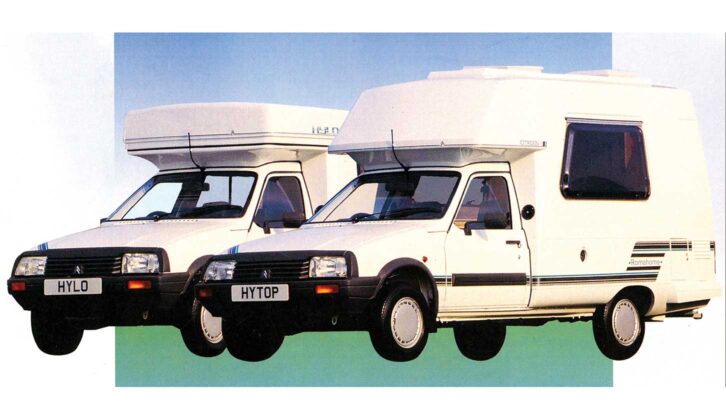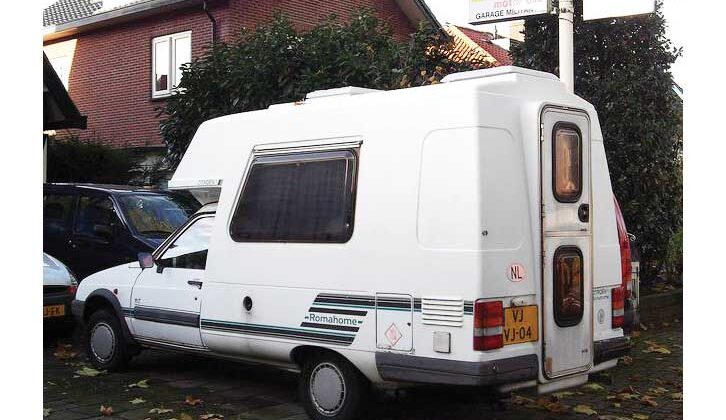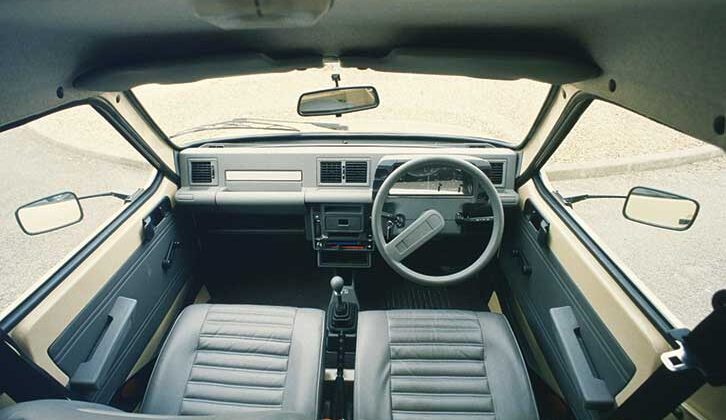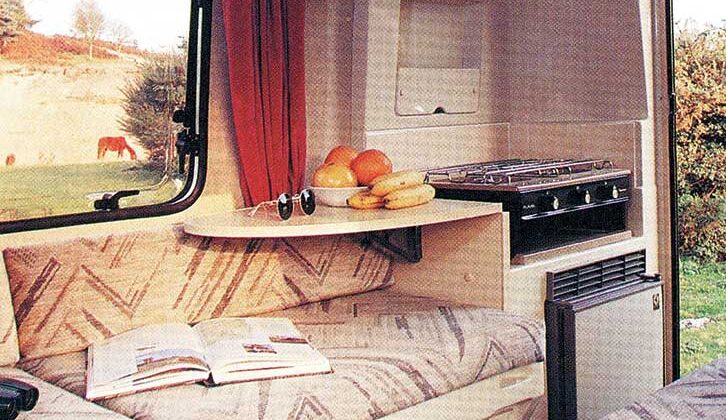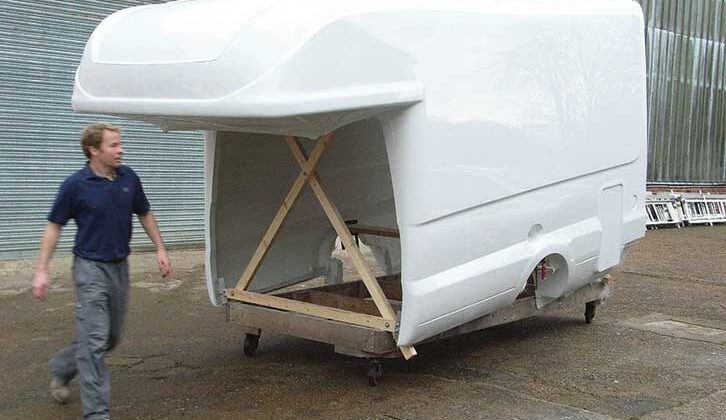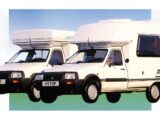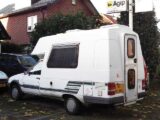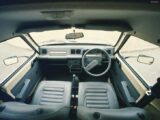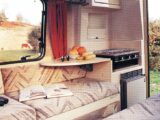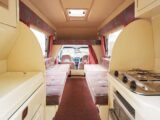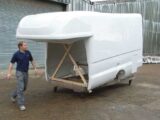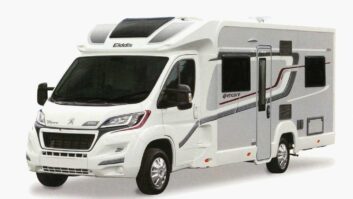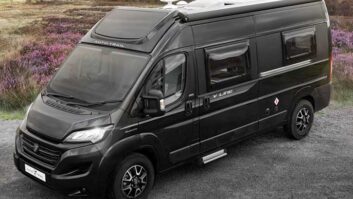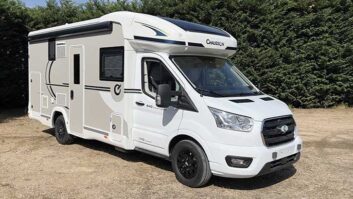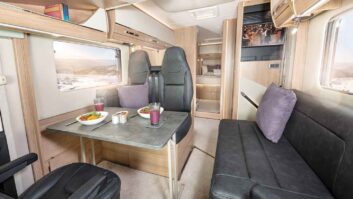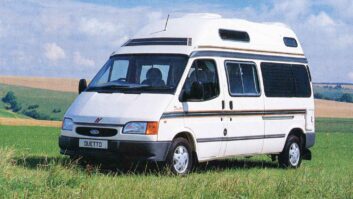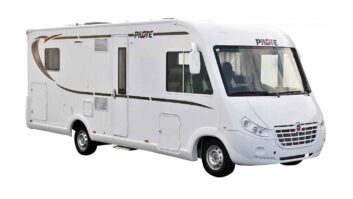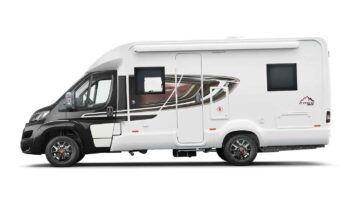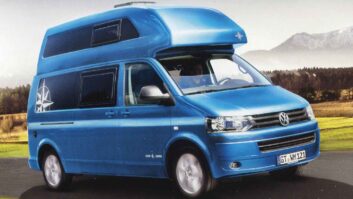Sea water was one of the catalysts in the creation of the Romahome. Back in the 1970s, maverick yacht (and occasional kit-car) designer Barry Stimson developed a demountable motorcaravan body for the recently imported 345cc Honda TN7 micro pick-up truck.
He sold the design to specialist GRP marine moulders Island Plastics. Production commenced with a monocoque GRP version to fit the much improved Honda Acty pick-up. The body and cabinetwork were in yacht-grade GRP, which was tough, high-gloss and leak resistant, and which also looked fabulous.
With amazing synchronicity, the Japanese scaled back production of micro-trucks at around the same time that Island Plastics MD Brian Bailey consulted current owners and found that few ever demounted the body.
Thus, replacement Romahome underpinnings for a ‘permanently attached’ body were sought, resulting in the change to Citroën’s C15, also referred to as the Citroën Champ.
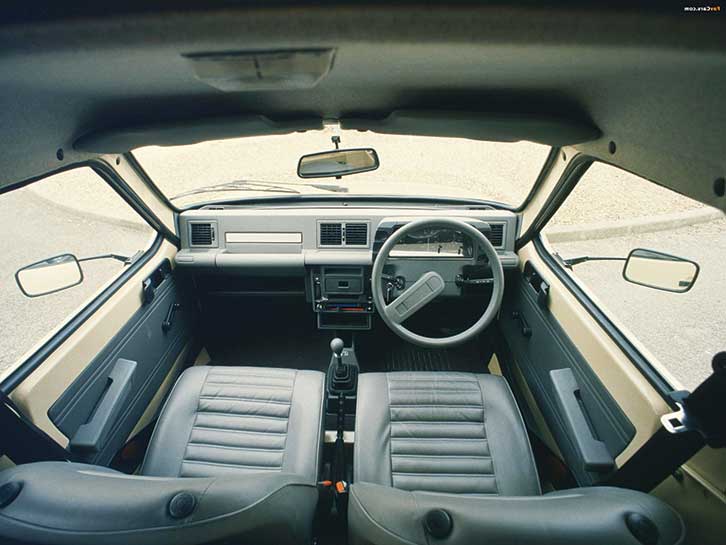
After a while, prospective purchasers – mostly living in densely populated urban areas – expressed their desire for a garageable version of the small motorhome, leading to the Hylo variant, featuring a solid-sided, vertically extending rising-roof. Unsurprisingly, after the Hylo’s launch, the fixed-roof version gained the moniker Hytop.
Both versions had the same motorhome layout, whose USP was a dropped kitchen floor at the far rear, which facilitated full standing-height in a fixed-roof vehicle that was only 2.31m (7’ 7”) tall.
Entry and egress was via a glazed stable door centrally located in the rear panel. You step immediately into the galley, with the hob and grill on the right (offside), and the sink on the left (nearside). The lounge is between the kitchen and the cab. Its pair of long, inward-facing settees quickly convert into easy-access longitudinal single beds, or an all-over double if preferred.
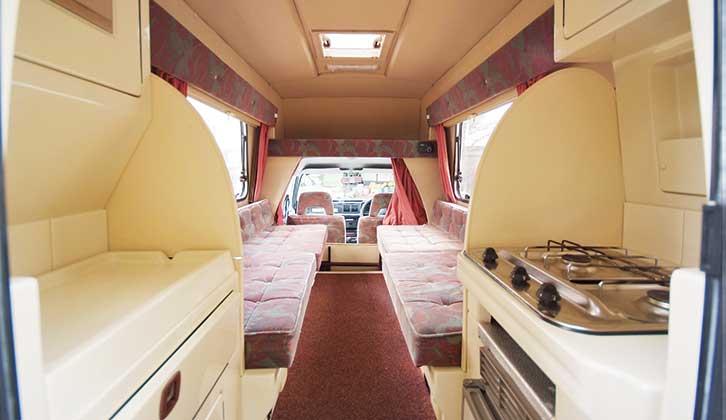
The overcab area is designed for the storage of light, bulky items, such as sleeping bags, duvets, quilted outdoor coats and the like.
There is no separate washroom (use the kitchen sink), but there is dedicated storage for a freestanding Porta Potti (see our portable toilets for a campervan guide to see our top picks) under one of the seats, which many place at the far rear at night. Others employ a freestanding toilet tent, one of the original extra-cost options.
As you might expect, the basic spec was, well, basic! You got a two-burner gas hob and grill, sink with pumped cold water and 12V electric lighting.
A mains hook-up, leisure battery, three-way (gas/12V/230V) fridge and blown-air heating were all extra-cost options when new. All are relatively easy retrofits for used ’van buyers.
The (almost) indestructible moulded GRP body outlasted quite a few base vehicles, which encouraged owners to ‘clip’ (transfer) the motorcaravan part on to a newer base vehicle.
Some of the original micro-truck based examples are on their third set of underpinnings. Other C15s – used as an ‘only’ vehicle – may have covered an intergalactic mileage (think 200,000 miles). That said, some currently for sale have an ultra-low mileage recorded, mainly because of the lifestyle of those particular owners.
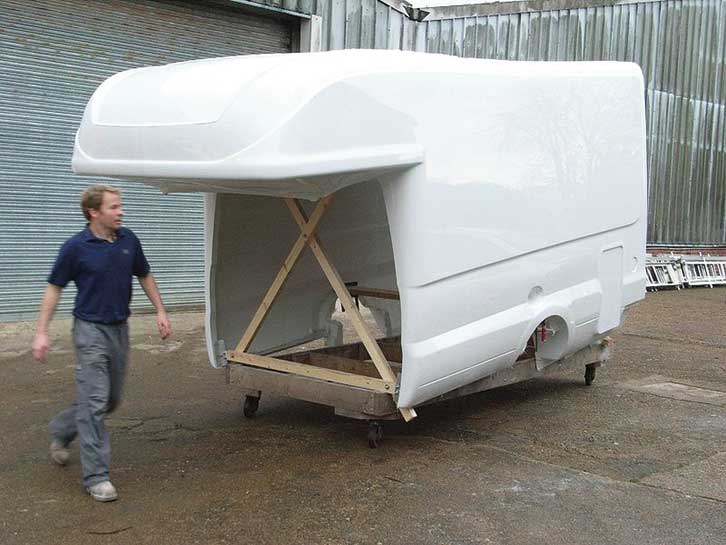
Romahome is so cosy, practical and low maintenance, it appeals to a far wider group of people than ‘traditional’ motorcaravanners. Landscape painters, birders, photographers, night anglers and so on are all hugely enthusiastic Romahomers, but will only ever cover a low annual mileage.
Standard motive power was a rather mediocre 1.1-litre 46bhp petrol engine. Nothing dreadfully wrong with that, but it is ‘thin gruel’ when compared to the optional 59bhp Derv drinker. The latter is spirited (for a nat-asp) and remarkably economical.
I’ve evaluated motorhomes costing hundreds of thousands, but the clever, compact and affordable Romahome remains one of my all-time favourites. I inducted the Romahome on micro Japanese pick-up trucks into the Practical Motorhome Hall of Fame too, a ‘van that became the most popular micro motorhome ever.
What to look out for in a Romahome on Citroën C15
Base vehicle
The diesel engine is a simple but rugged unit – sans gizmos électroniques. They just require regular oil and filter changes, so check for evidence of this.
The petrol unit can tend to be a bit temperamental, so make sure that it starts easily, idles smoothly and accelerates without hesitation.
The main cause of MoT failures is corrosion. Closely examine the main bulkhead behind the engine, inner wings and rear crossmembers.
Original cab door locks can be pretty puny, so invest in a strong steering wheel locking bar to help discourage thieves. The heavy(ish) steering on non-PAS examples can be ameliorated by inflating the front tyres to the recommended maximum pressure and fitting a spinner (knob) to the steering wheel.
Conversion
Look at the integrity of seals around the windows, rooflights and habitation door. Any stained trim adjacent is a tell-tale sign of water ingress. Budget for upgrading safety equipment. A carbon monoxide alarm, smoke alarm and fire blanket should all be prioritised.
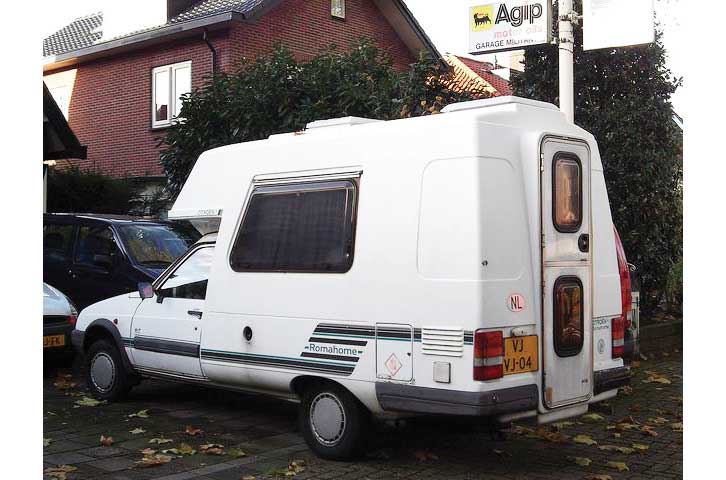
Often overlooked is the need to regularly update the LPG regulator and connecting hose.
Replace the hob if it is depositing soot on the bottom of pans.
Our pick
One with 1.8 diesel power, but it’s not a deal breaker, especially if the body is destined to be ‘clipped’. Citroën’s Berlingo is a good candidate for this. You’ll find that there are more pre-owned Hytops than Hylos for sale.
What to pay
Non-runners/MoT failures available from £1000.
Mint low-milers usually available from £5000 trade. That said, genuine ‘bargains’ do appear from time to time. We spotted a doozy on Gumtree, a 1997 Hylo with just 15,000 miles covered, offered for sale privately at £4000.
Essentials
- Romahome Hytop and Hylo on Citroën C15
- Built 1987-1996 in Cowes, Isle of Wight, UK
- Overcab fixed-roof and elevating-roof coachbuilts
- Overall length: 4.75m (15’ 7”)
What we like:
- Tough and appealing (transferable) GRP body
- Compact exterior dimensions
- Simple lounge-to-bed(s) conversion
- 1.8-litre diesel engine
- Easily affordable
What we dislike:
- Base vehicle prone to corrosion
Alternatives to the Romahome on Citroën C15
Despite sharing the ‘Club Joker’ moniker, the Westfalia Club Joker & Club Joker City are both a quality conversion on a premium base vehicle. For something different, how about a used Auto-Trail Grande Frontier? These are some fine aspirational ‘vans which have been designed for the UK market. Then there’s the Auto-Sleeper Duetto, a model which combines affordability with practicality.
If you’ve enjoyed reading this article, why not get the latest news, reviews and features delivered direct to your door or inbox every month. Take advantage of our brilliant Practical Motorhome magazine SUBSCRIBERS’ OFFER and SIGN UP TO OUR NEWSLETTER for regular weekly updates on all things motorhome related.
